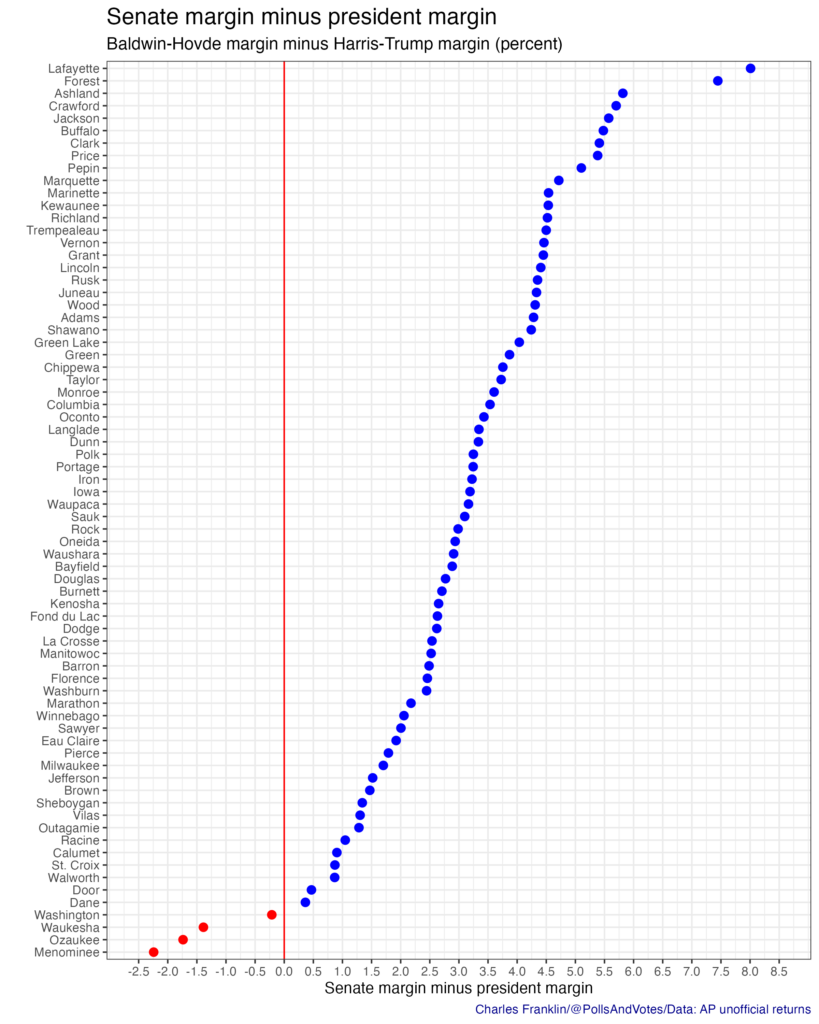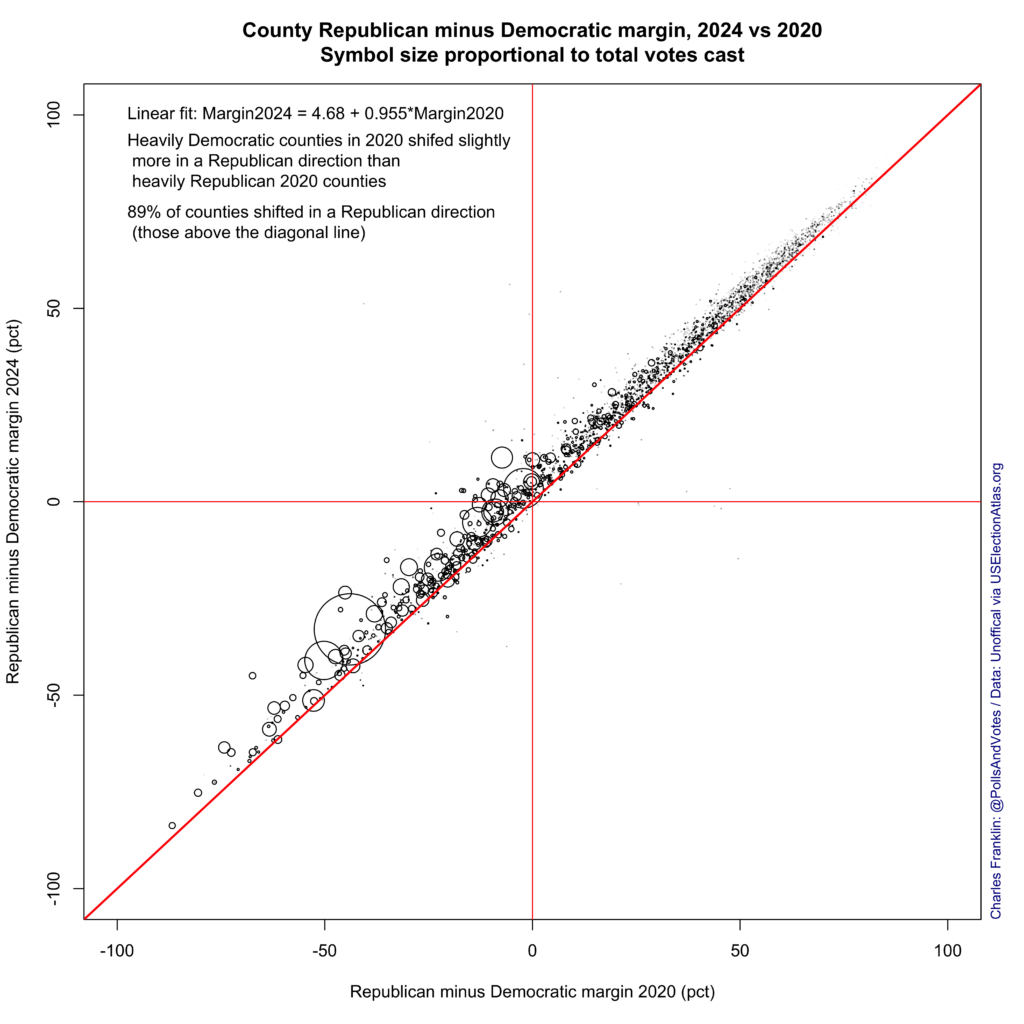Presidential Vote Change and Senate vs. Presidential Vote
Two sets of maps tell part of the story of the 2024 election.
First is how the changes from 2020 to 2024, and from 2016 to 2020 were modest in size compared to the massive shifts from 2012 to 2016. The 2016 election reset the playing field. Since then voters shifted slightly to President Joe Biden in 2020 and now slightly to Former President Donald Trump in 2024. In 2012 President Barack Obama won the state by 6.9 points, then Trump won in 2016 by 0.8, a shift of 7.7 points on the margin. But in 2020, Biden won by 0.6 points, a shift of 1.4 points. Now in 2024 Trump has won by 0.9 points, a shift of 1.5 points. These shifts, small as they are, have flipped the state in two successive elections, but the magnitude of the vote shifts pale in comparison to the prior change from 2012 to 2016.
The maps show change between successive elections in each ward in the state. This is the change in the margin of the 2-party vote in each year. The ward level data is the product of the Marquette Law School Lubar Center’s election night data collection project led by Lubar Fellow John Johnson. (As of this post 2 counties have not yet posted ward level returns for 2024. They are shaded on the maps by the county-wide votes.)

The second pair of maps show the vote margin in the U.S. Senate race, on the left, and the difference between the Senate margin and the presidential margin on the right. Incumbent Sen. Tammy Baldwin won by 0.9 percentage points, reversing the win by Trump by 0.9 points. This small 1.8 point difference delivered a rare split outcome in Wisconsin with different parties winning the presidential and Senate elections on the same day.
Baldwin’s margin was substantially due to large and heavily Democratic counties including Milwaukee and Dane. But had the Senate race merely matched the presidential vote Republican Eric Hove would have won. The map on the right shows that Baldwin did better in most parts of the state than did Vice President Kamala Harris in the presidential contest. The Senate margin was more favorable to Baldwin in most of the state, including areas that favored Trump in the presidential race. Much had been written about Baldwin’s ability to “lose by less than other Democrats” in Republican leaning areas. In 2024 that was apparent.
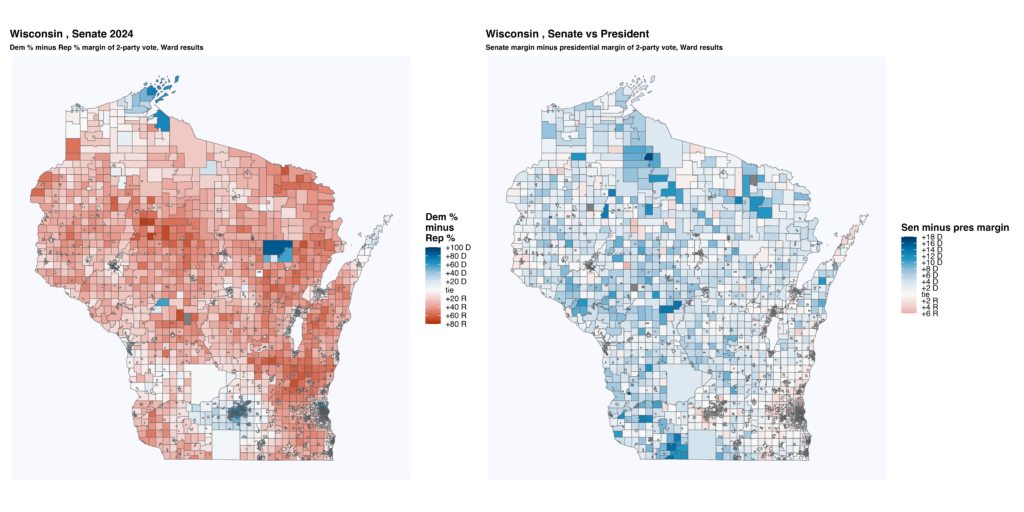
Wisconsin County Votes for President and Senate
Here is a simple guide to the county votes for president and Senate in Wisconsin on November 5, 2024.
Donald Trump won 59 Wisconsin counties while Kamala Harris won 13.
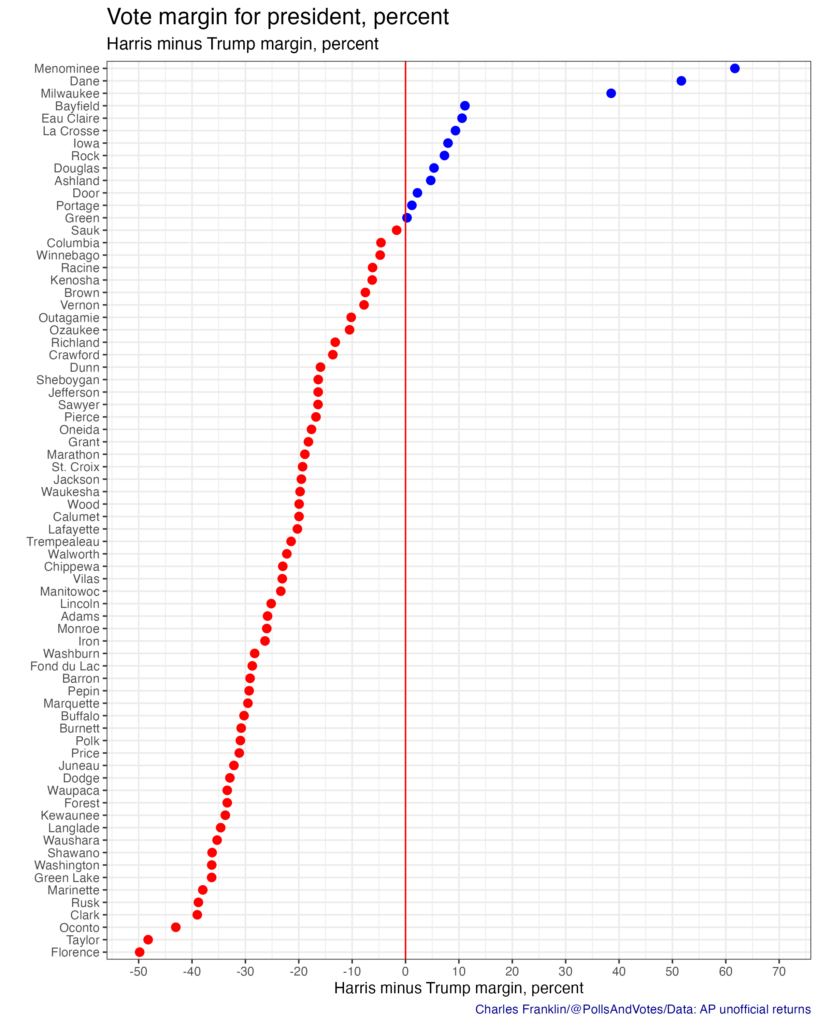
Where do the votes come from? The Democratic net vote comes with huge margins in Dane and Milwaukee counties, followed by much smaller margins in 11 other counties. The large Republican margins come from Waukesha and Washington. The many smaller Republican leaning counties collectively provide Republican strength, offsetting the fewer counties with Democratic majorities, despite the large margins in Dane and Milwaukee.
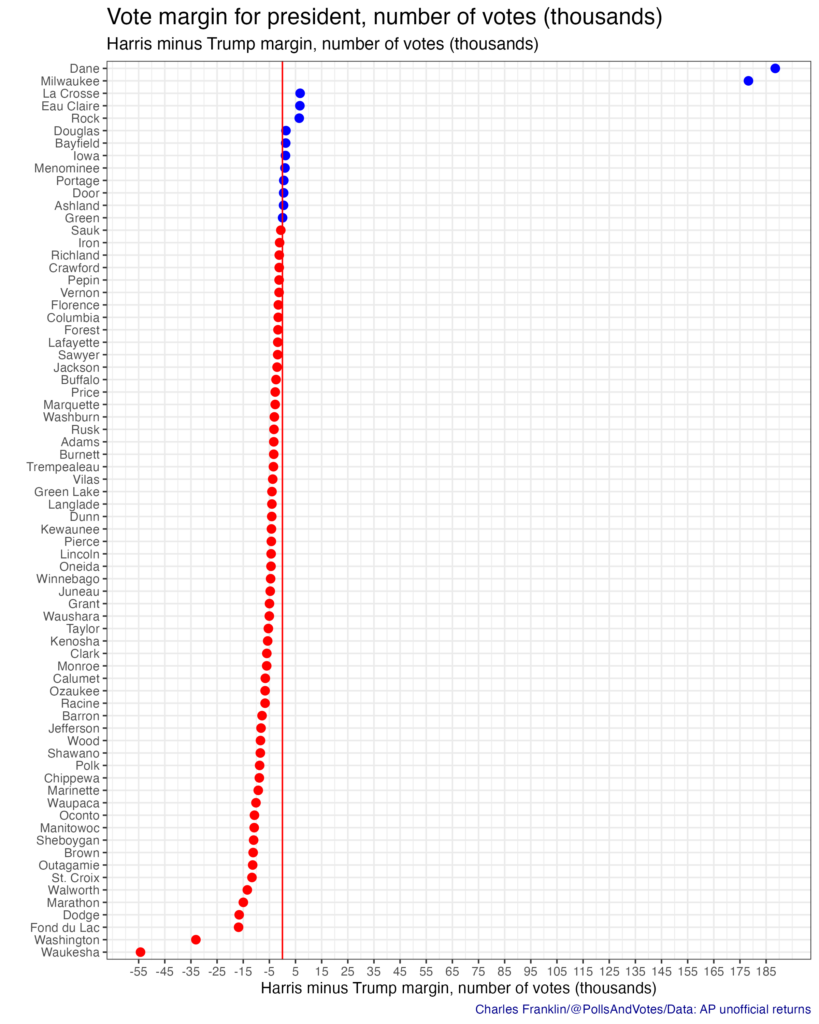
Harris improved over Biden’s 2020 vote percentage margin in only four counties, Washington, Ozaukee, Waukesha and Door. She did a bit worse than Biden in Eau Claire, Dane and (especially) La Crosse, usually Democratic strong holds.
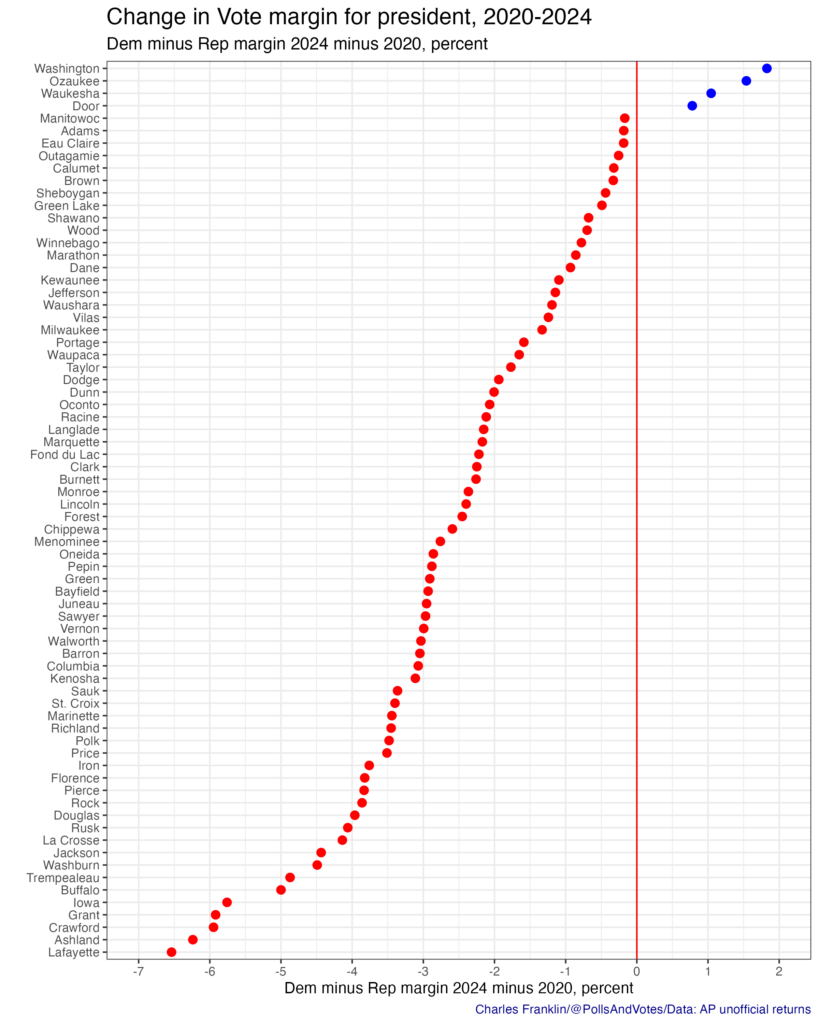
County vote margin in the Senate
Baldwin won 14 counties, including Sauk which Trump won, while Hovde won 58.
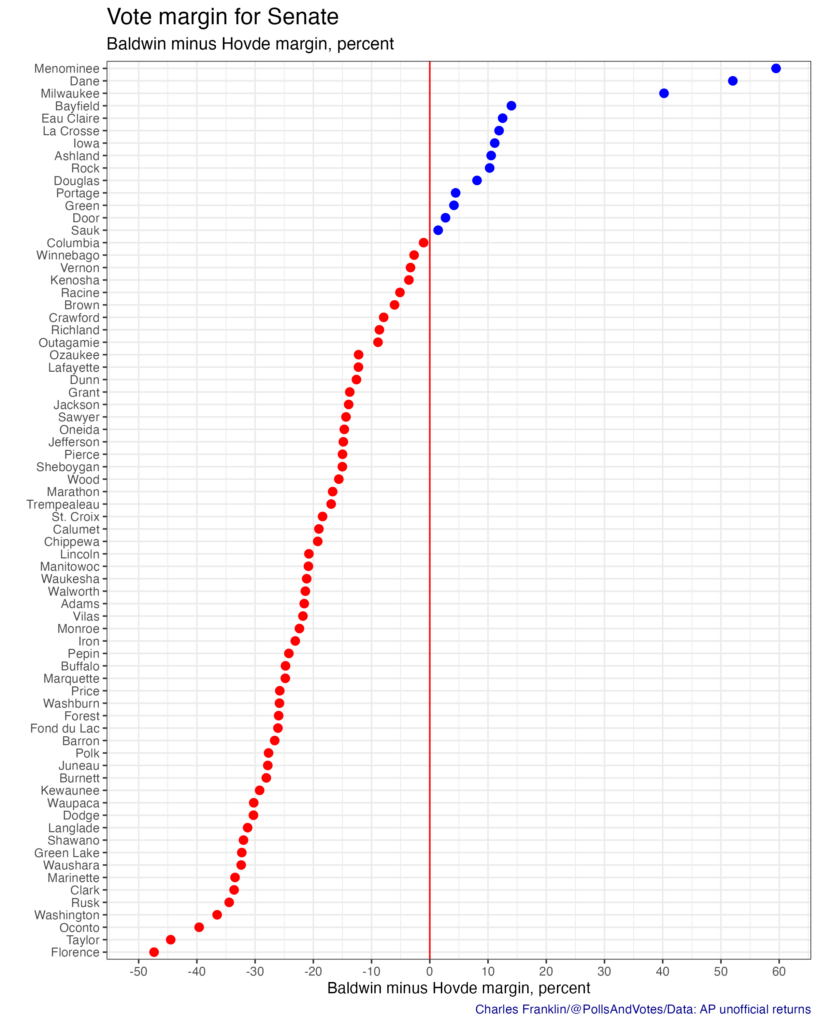
Senate margin minus presidential margin
While Baldwin only narrowly out-performed Harris, winning by .9 percentage points while Harris lost by .9 percentage points, Baldwin outperformed the presidential ticket in all but four counties: Menominee, Ozaukee, Waukesha and Washington.
